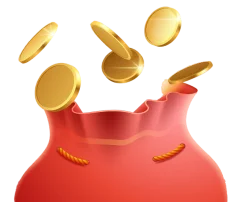Please allow ads on our site
Please log in to access this content. You will be redirected to the login page shortly.
LoginBasho meaning in Sports ?
Sports Miscellaneous in Sports 9 months ago
A honbasho (本場所) is an official professional sumo tournament. The number of honbasho every year has varied along the years; since 1958 there are six tournaments every year. Only honbasho results matter in determining promotion and relegation for rikishi (sumo wrestlers) in the banzuke ranking. Since 1926 the honbasho are organized by the Japan Sumo Association, after the merger of the Tokyo and Osaka sumo associations.
The term honbasho means "main (or real) tournament", and is used to distinguish these tournaments from unofficial tournaments which are held as part of sumo tours, between the six major tournaments. Such display tournaments may have prize money attached but a wrestler's performance has no effect on his ranking. This type of sumo is often called hana-sumo (lit. flower-sumo) as it is not taken as seriously by the wrestlers.
Honbasho last for 15 days. Sumo wrestlers ranked in the top two divisions (makuuchi and jūryō) wrestle once each day, while those of the lower divisions wrestle seven times, approximately once every alternate day. The lower division matches begin at 8.30am.
The first aim for most wrestlers is to achieve kachi-koshi, or a majority of wins, and thus ensure a promotion for the next tournament. In addition for each division there is a championship prize (yūshō) for the wrestler with the most wins at the end. A playoff on the final day is used to decide the winner in case of a tie. The yūshō winner of the tournament receives the 30-kg heavy Emperor's Cup.
Unless a playoff is required, two wrestlers will fight each other no more than once in a whole tournament. The bout schedule is set by a committee of sumo elders a day or two in advance of a tournament day, and may be announced from the sumo wrestling ring the day prior by a senior sumo referee. Although there is no fixed method, for the first half of a tournament the top division of sumo wrestlers will generally pair the best-ranking wrestlers (san'yaku) against the lowest-ranking wrestlers (maegashira) in the tournament, with the rest of maegashira fighting among ranks closer in strength. The schedule for the second half of the tournament will have mainly san'yaku fighting each other, with the remainder of the ranks determined by their win-loss records up to that point. One consideration is to minimize the necessity for a tiebreaker bout, particularly if a contender for the yūshō is lower-ranked and has thus far faced only other lower-ranked wrestlers.
Outside playoff bouts, neither wrestlers from the same heya nor wrestlers related by blood are scheduled to fight each other.
For jūryō and below, the first half of a tournament will have wrestlers of similar rank competing against each other, while the second half will be determined by win-loss records.
If a wrestler has withdrawn due to injury or retirement from a scheduled bout, his opponent wins by default (fusenshō.) A loss by default is known as fusenpai. Any remaining bouts that a wrestler misses will be regarded as losses when drawing up the next tournament's rankings. If a withdrawal results in an odd number of wrestlers in one division, the schedule is filled in by pairing a lower-ranked wrestler against a higher-ranked wrestler from the next-lower division.
The six honbasho are:
The March tournament in 2011 was cancelled due to the Sumo Association launching an investigation into allegations of match-fixing involving several sekitori ranked wrestlers. This was the first cancellation of a honbasho since 1946, when the summer tournament was not held because of renovations to the Ryōgoku Kokugikan following damage sustained in World War II. The May 2011 tournament went ahead, but was described by the Japan Sumo Association as a "technical examination" tournament rather than a fully fledged honbasho, with tickets given away for free in a lottery, and no prize money or trophies awarded.
The March tournament in 2020 was conducted without spectators due to the recent outbreak of COVID-19 (novel coronavirus) in Japan and surrounding areas. It was the first time since World War II that a basho has been closed to the general public. The move followed a request from the Japanese Governnment that major public events be cancelled, postponed or scaled down in order to control the spread of the coronavirus. The Sumo Association added that if any of reference
| Full Form | Category |
|---|---|
| Be Always Safe Hot Ovens | General |
| Honbasho | Sports |
Posted on 06 Jan 2025, this text provides information on Sports related to Miscellaneous in Sports. Please note that while accuracy is prioritized, the data presented might not be entirely correct or up-to-date. This information is offered for general knowledge and informational purposes only, and should not be considered as a substitute for professional advice.
Take Quiz To Earn Credits!
Turn Your Knowledge into Earnings.

No matter what stage you're at in your education or career, TuteeHub will help you reach the next level that you're aiming for. Simply,Choose a subject/topic and get started in self-paced practice sessions to improve your knowledge and scores.

